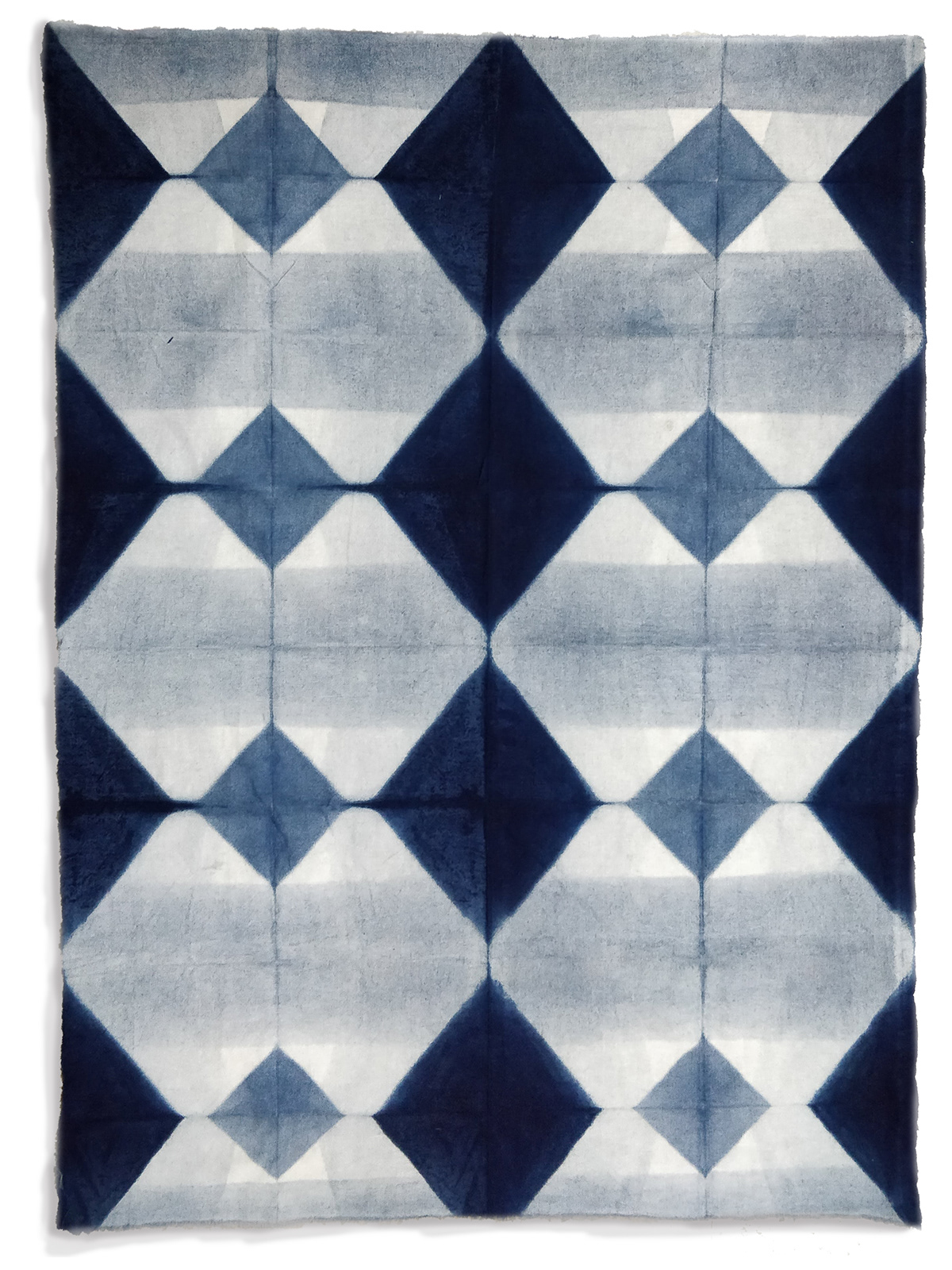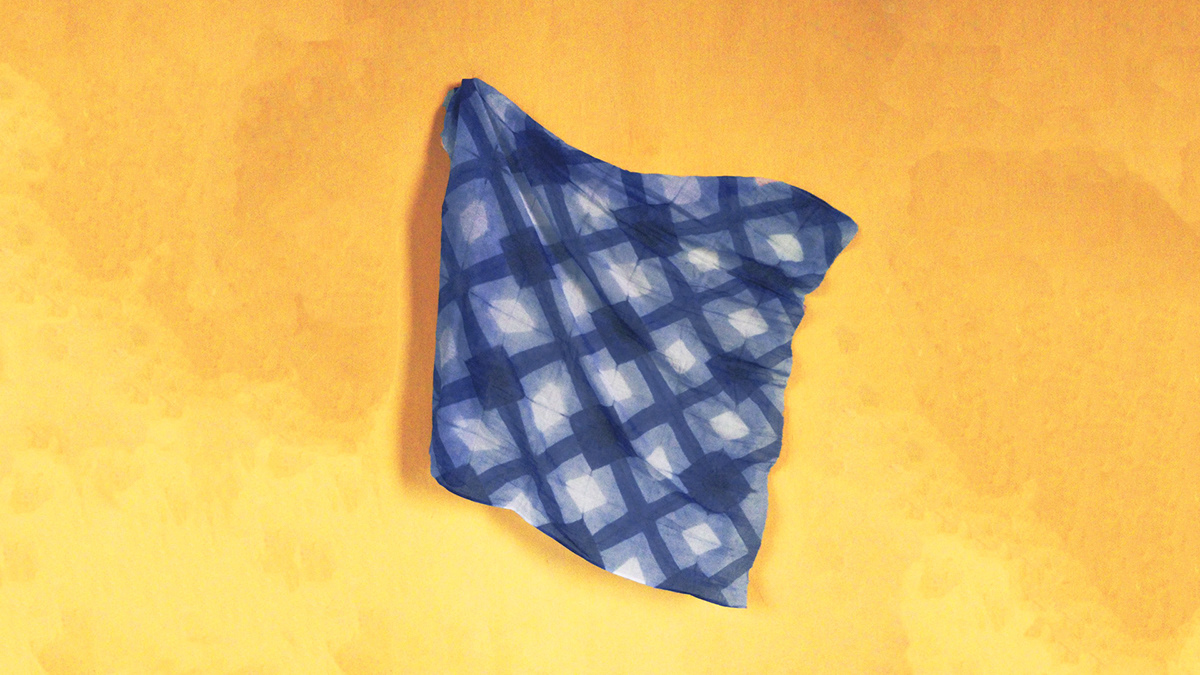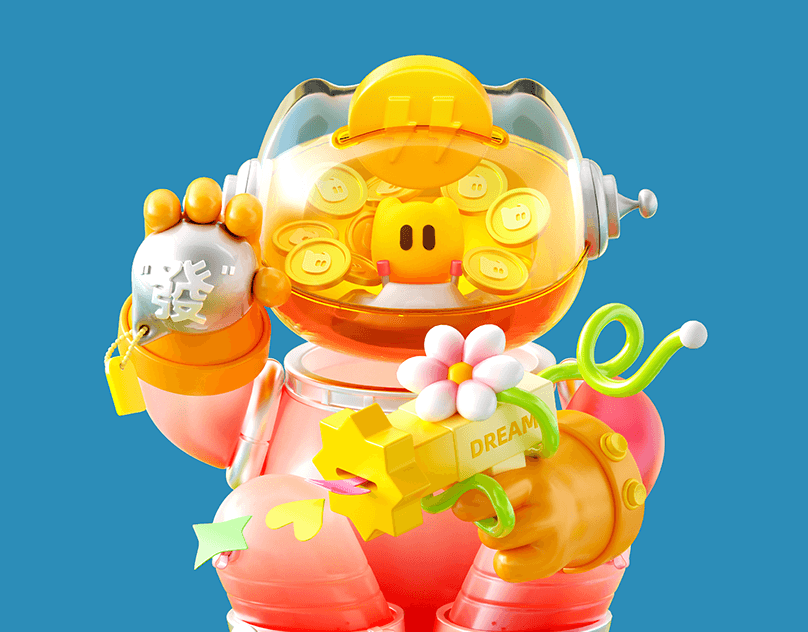
In Design workshop, a two week course, we were introduced to resist dyeing. A research on various techniques of resist dyeing was done. Shibori dyeing is a Japanese technique which was used to produce patterns on fabric mainly with Indigo. I experimented with Itajime Shibori, Arashi Shibori and Stitch Shibori throughout the course. The aim of the course was to appreciate and learn the art of perfection that resist dyers have.
The below experiment used the Stitch Shibori technique. A square piece of cotton fabric was folded to form a triangle and then machine stitched very closely with polyester thread. After the stitches were made, it was dipped in Indigo dye to achieve the below result.

Arashi Shibori is a technique in which the fabric is wrapped around a pole or a pipe using polyester thread and then dipped in the dye to achieve a pattern that has lines. Straight parallel lines were drawn at a distance of 1cm from each other using a pencil. These lines were guides for wrapping the thread around. After wrapping a few rounds, the fabric is scrunched down. Once the whole fabric is done it is then dipped in the dye.

Arashi on jute
A combination of clamp dyeing and Arashi dyeing was done. First the part where Arashi was to be done was resisted with the help of plastic. Two identical wooden blocks that had parallel lines pattern were clamped with the help of ‘C clamps’. The fabric was dipped in water, then in Indigo, then left for oxidation and finally washed. After it dried, this part was resisted and wrapped around the Arashi pole.

Arashi on Chiffon
Cotton and jute were explored as materials to try Arashi before, a contrasting fabric, chiffon was chosen for the next experiment. As this material is loosely woven, it was an easier material to scrunch on the pipe for Arashi. As seen below, the lines that were resisted with the help of polyester thread were not as defined as on cotton and jute. The dye bled more and achieving good results was a matter of practice.

Itajime shibori is a technique in which two identical pieces of wood are used to resist an area of fabric. They are attached with the help of ‘C’ clamps and then dipped in dye after wetting the fabric. Below is an experiment on cotton fabric.

Final product
As the final sample had to be a product, I decided to use mul fabric to make a scarf using Itajime technique. I was working on 1m x 1m mul fabric then on. I tried a few samples on paper to see what my final sample would look like. Triangle accordion fold, square accordion fold, fan folds were some that I explored my samples with. The final composition was decided, it was made using triangle accordion fold. The 1m fabric was ironed, carefully folded into the triangle accordion fold. The folds had to be edge to edge otherwise the pattern won’t be as neat and finished as it should be. Then the clamp was placed on it. It was dipped in indigo. The part which did not require the dye was resisted using a plastic. To achieve different shades of Indigo, the fabric was dipped in dye several times, resisting different parts each time in the process.
Shown below is the process of folding the square piece of fabric into an accordion fold and how the pattern was decided.


Final product: Indigo Dyed Itajime Stole
Size: 1m x 1m Mul fabric


Course duration: 2 weeks
Faculty: Riddhi Jain Satija
Models: Divyalakshmy Sajeev &
Ritika Khinvasara



